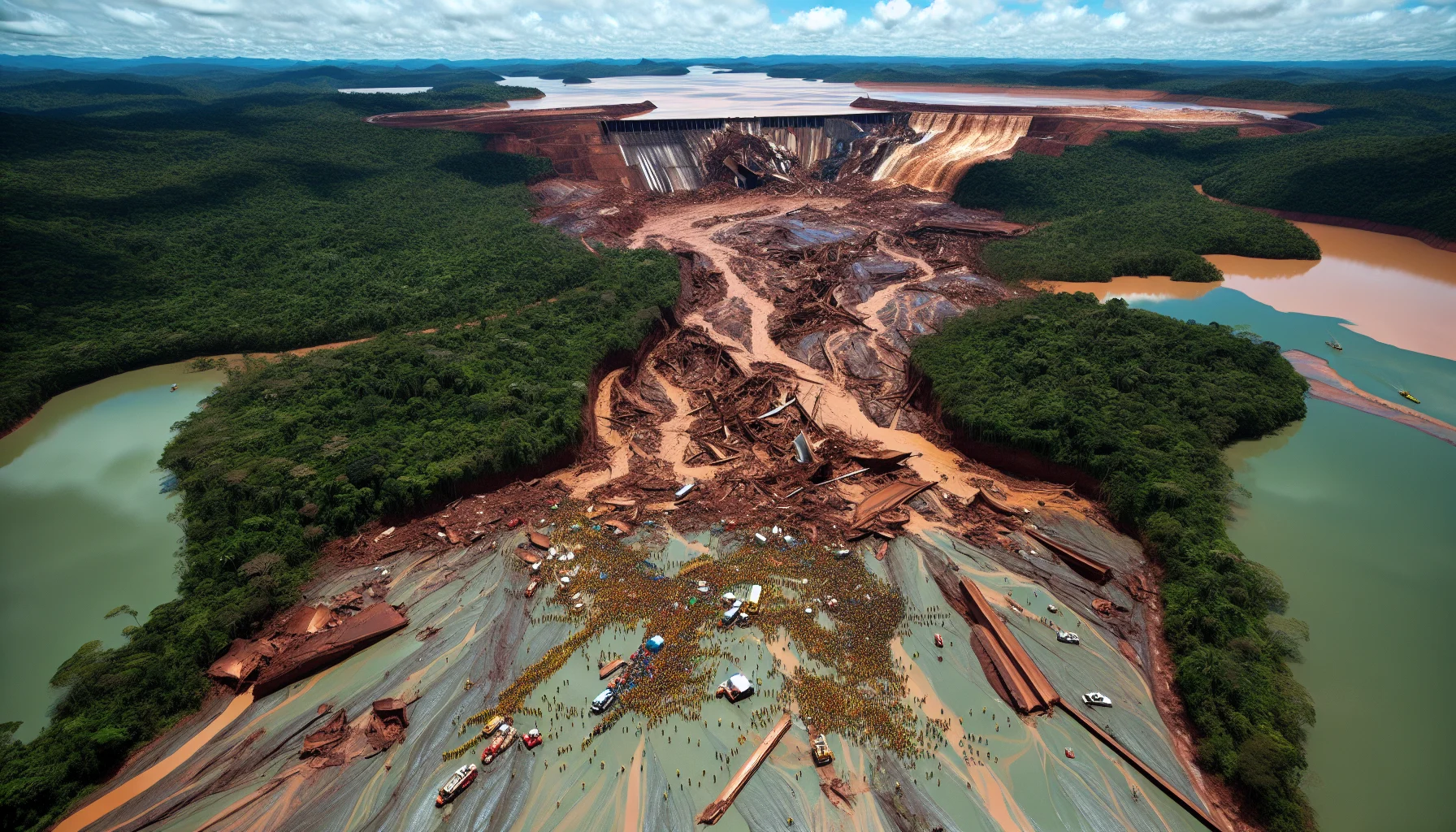
Brumadinho Dam Disaster
by: The Calamity Calendar Team
January 25, 2019
A Quiet Day Shattered
On the afternoon of January 25, 2019, the serene town of Brumadinho in Brazil's Minas Gerais state was ripped from its tranquility and thrown into chaos. At its heart lay the Córrego do Feijão mine, owned by Vale S.A., one of the largest mining companies in the world. The dam at this mine, known simply as Dam I, was a crucial component in the extraction of iron ore, holding back millions of cubic meters of mining tailings—a hazardous slurry of waste material.
Though such dams are an integral part of mining infrastructure, they come with an inherent risk. The Brumadinho disaster was a grim reminder of what can occur when those risks are underestimated or ignored. Just under four years earlier, the Samarco dam collapse in Mariana, also connected to Vale, had already cast a shadow of doubt over the country's mining safety practices. However, the lessons had not been fully realized, and the dam at Brumadinho would soon reveal the catastrophe that lay in waiting.
The Collapse Unfolds
The first sign of impending disaster was the sudden roar of collapsing earth at around 12:28 PM local time. In mere moments, Dam I gave way, releasing a catastrophic wave of mud and tailings that thundered through the mine’s facilities, engulfing everything in its path. Entire buildings vanished beneath the deluge, and with it, the lives of many workers, residents, and visitors who had no chance to escape.
Vale's internal emergency alarms, which were meant to provide critical warning and time for evacuation, failed to function properly. This oversight proved fatal, leaving hundreds in the path of destruction with little forewarning of the impending doom. As the sludge barreled forward, it engulfed administrative buildings and the train loading area, spreading further into the adjacent community where families were going about their daily lives.
Racing Against Time
Rescue teams sprang into action but faced formidable challenges. The sludge rendered roads impassable, turning the once-familiar terrain into a nightmarish quagmire. Helicopters hovered above, winching people from rooftops where they had sought refuge. The efforts of local firefighters, military personnel, and volunteers were nothing short of heroic, yet the sheer scale of the mudflow meant that many would remain trapped beneath the heavy mire.
In the days that followed, hope for finding survivors dwindled. The official death toll rose steadily, eventually confirming 270 lives lost, with 11 unaccounted for and presumed dead. The human tragedy of Brumadinho reverberated across Brazil, leaving communities shattered and grieving for what had been swept away in an instant.
Thanks for subscribing!
A Landscape Forever Changed
Beyond the human toll, the disaster left an indelible scar on the environment. The Paraopeba River, a crucial waterway for the region, was smothered under millions of tons of toxic tailings, causing catastrophic ecological damage. The vibrant ecosystem around Brumadinho faced a slow and uncertain recovery, with the contamination threatening aquatic life and the livelihoods of those who relied on the river.
The economic impact on Vale was considerable. With its share prices plummeting and losses amounting to billions, the incident struck a severe blow to the company’s finances and reputation. The broader mining industry in Brazil also felt tremors as scrutiny and mistrust in regulatory frameworks grew.
Seeking Accountability
In the aftermath, the Brazilian government, alongside international agencies, began investigations to untangle how such a failure could happen. Findings pointed to glaring oversights—a lack of maintenance, feigned inspections, and profound neglect in addressing known vulnerabilities.
Executives at Vale faced legal consequences, with arrests highlighting the extent of institutional failure. The tragedy spurred nationwide changes in mining regulations, including the decommissioning of upstream tailings dams, similar in weak design to Brumadinho’s. This was meant to prevent another calamity but came too late for the families of those who perished.
An Ongoing Struggle
As investigations continued, it became clear that liquefaction—an abrupt transformation of solid soil into a liquid state—was a key factor behind the dam's collapse. Coupled with structural weaknesses and inadequate inspections, it painted a picture of a disaster waiting to happen.
The Brumadinho disaster serves as a chilling testament to the perilous intersection of profit motives and public safety. It underscores the pressing need for strict adherence to safety standards worldwide. Only ages of committed vigilance can ensure that tailings dam disasters remain relics of a troubled past rather than harbingers of future tragedy.
In the lessons taught by Brumadinho, the rallying cry for reform echoes, urging diligence and humanity in industrial endeavors. While healing for the people and land of Brumadinho is ongoing, the memory of that quiet afternoon and the devastation that followed remains a potent reminder of what is at stake when the balance between nature and industry is ignored.
Stay in the Loop!
Become a Calamity Insider and get exclusive Calamity Calendar updates delivered straight to your inbox.
Thanks! You're now subscribed.